Are you not satisfied having only ticked the Black Hole Left Original, Black Hole Right Original, Black Hole Left, Black Hole Right, Black Hole Left Extended, Black Hole Right Extended, Dark Star, Black Magic, Dark Star Low, Black Magic Low, North Ridge Mini, North North Ridge Mini, North Ridge, North North Ridge, North Ridge Low, and North North Ridge Low variations? Introducing Exit Stage Centre the most direct finish up the north face, for another 8 variations.
Category: First Ascents
Saucer Hull
The Split Boulder Area is a small clump of boulders at the bottom of the north side of Mount Habrich. Saucer Hull has a high start on a 50° to 35° suspended overhang.
Curtis Suave made this picture of me making the first ascent on June 17, 2016.
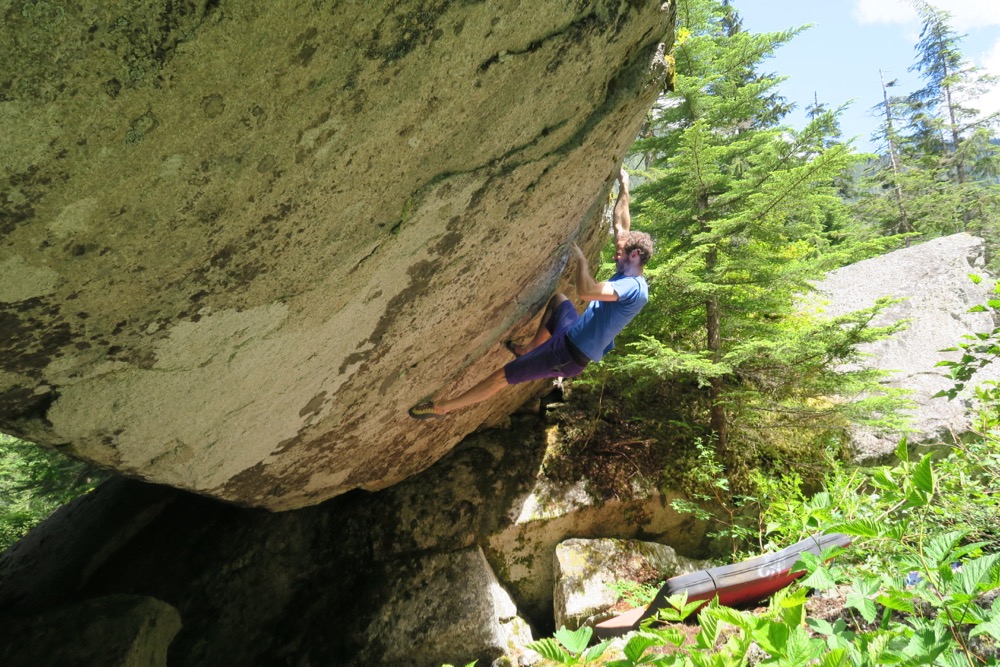
The Mastodon
Hunting around the Shannon Falls to Gonzales Creek area in Google Maps, I spied a boulder. Probably a big boulder.
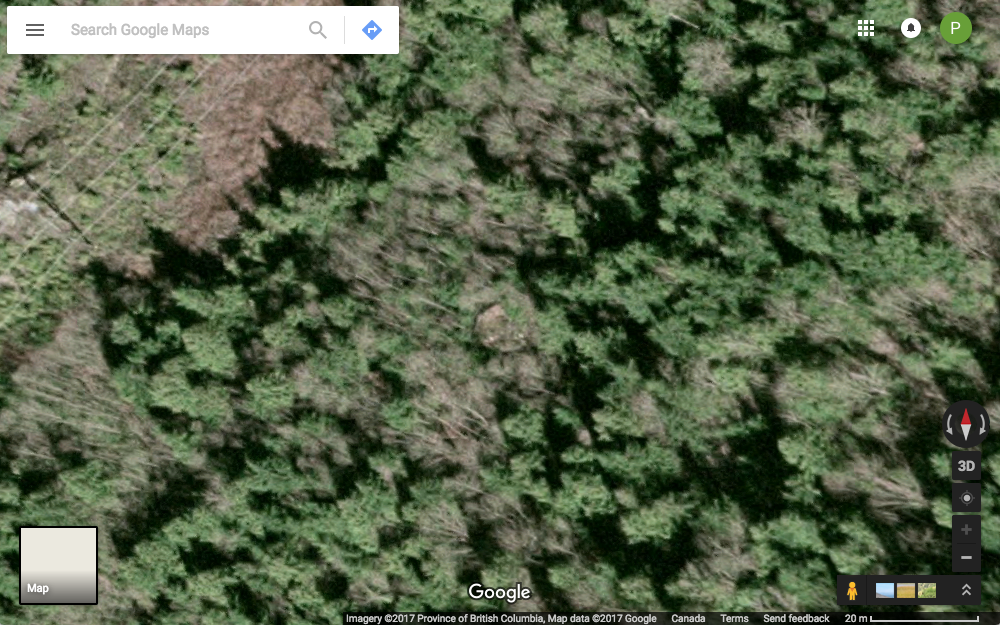
I entered the coordinates (49.66554, -123.16517) into my GPS and out I went.
On the way, I found Intoxication Boulder which is impressive on its own and provided a distraction.
I continued bashing down the hill looking for the big one. Only about 60 meters away, I arrived at a true beast of a boulder: The Mastodon.
The 8 meter tall line on the west side caught my eye the most. A shallow dihedral and sharp arete above a jumble of three big blocks for a landing.
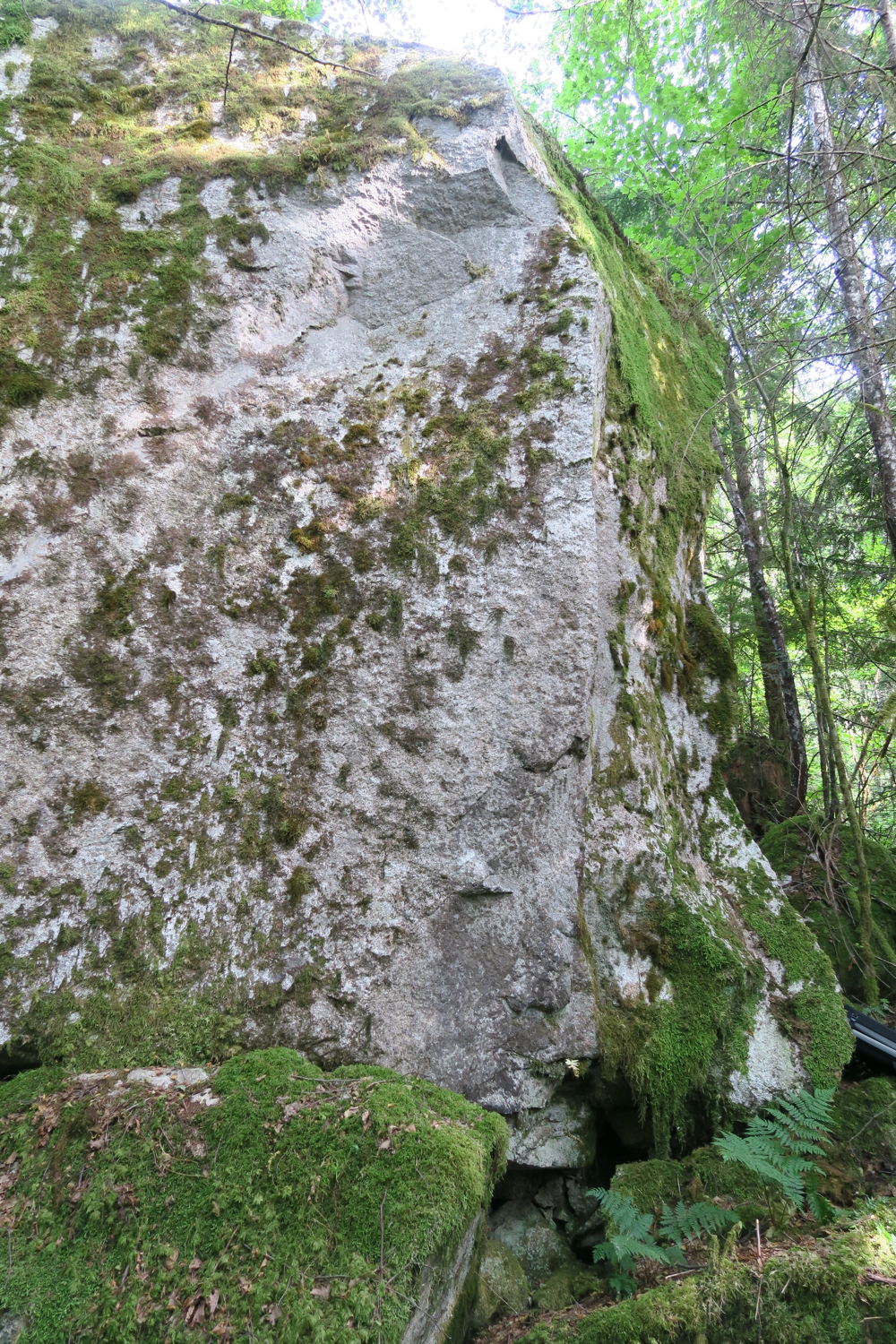
Ryan Davy and I had been planning on getting out climbing. Ryan’s shirt fit the plan quite nicely.
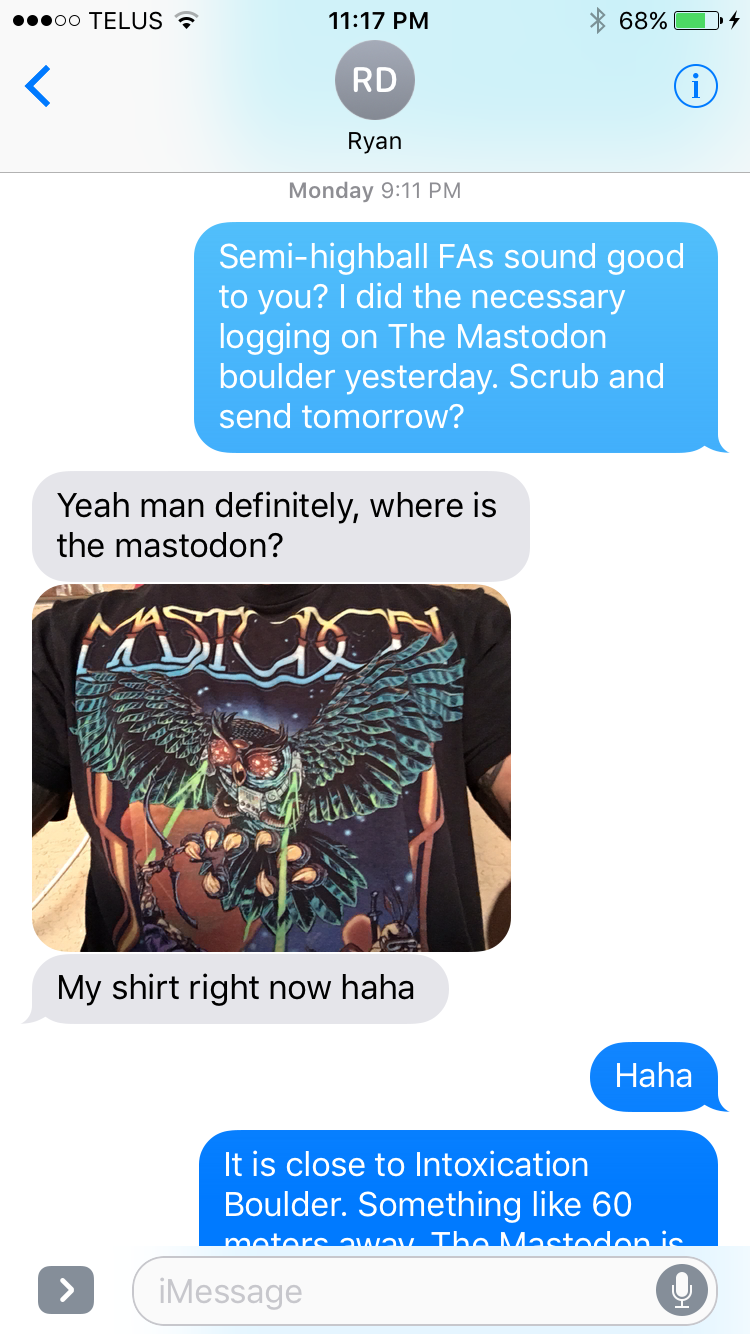
Last Tuesday, after messing around with two lines on not-so-good granite on the other side of the boulder, Ryan and I worked the dihedral/arete getting up to the crux. Lots of delicate footwork while laybacking the arete.
There was a bit of a rain delay this weekend but I was happy to find it dry this morning. While I waited for Ryan to arrive, I worked the top on a top rope.
As soon as Ryan arrived, it was time. I could barely wait to climb the thing. Ryan propped his camera against a tree and recorded this video.
I went up it a couple more times because it is such a fun climb.
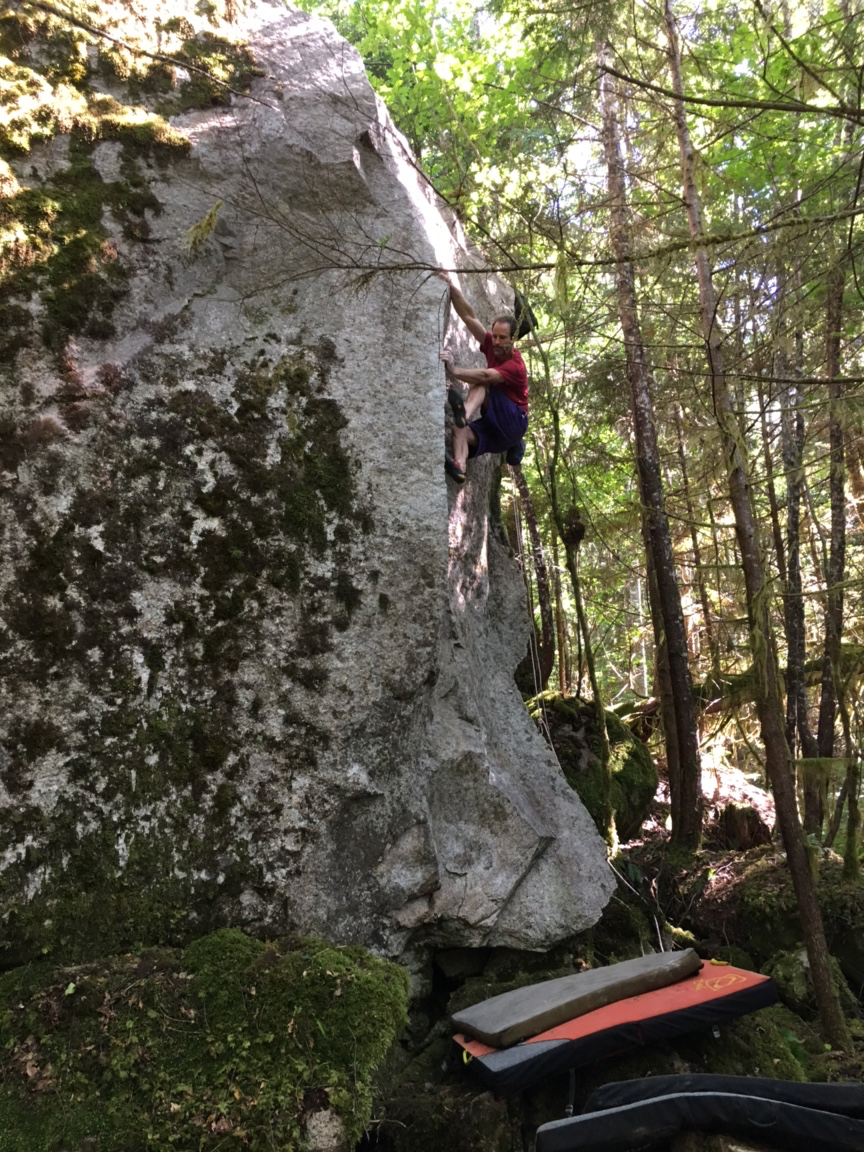
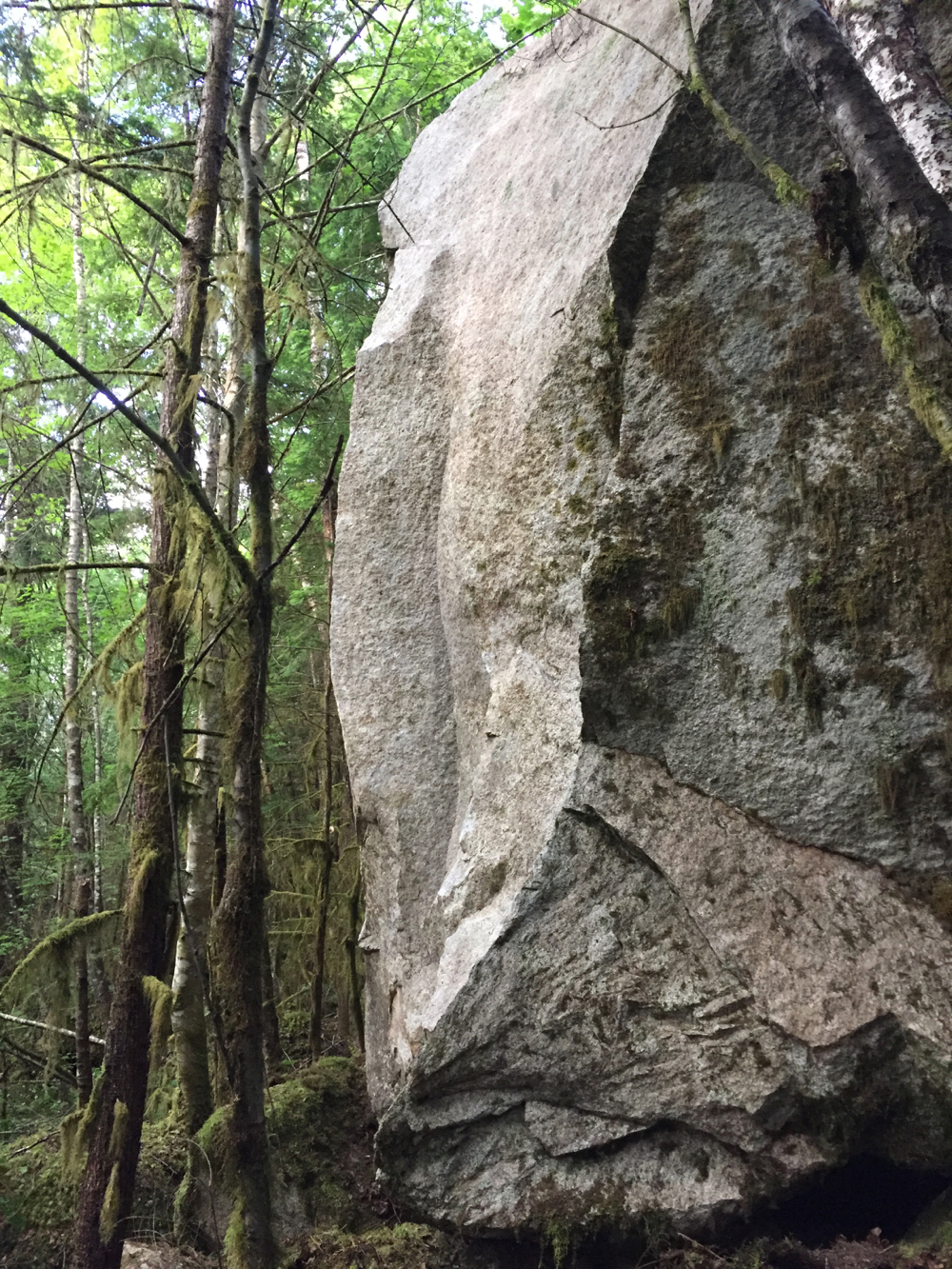
The Mastodon V4 ★★★★★
Peter Michaux, July 23, 2017
Climb the 8 meter tall striking dihedral/arete combination on the west face of The Mastodon boulder. Perfect granite.
Archer Pose
A 5 meter face of good granite that is just under vertical with positive edges and a loooong reach.
This one will be difficult to grade. I imagine you’ll either be able to make the reach or you won’t. They’d call this “morpho” in Font.
Early One Morning
Early One Morning is a relatively easy problem (probably V1) up a 40° overhang with four or so nicely flowing moves on horizontal edges. Just 15 meters behind Peter and the Wolf, Early One Morning makes for a good (re-)warm-up for its much more difficult neighbour.
See Peter and the Wolf for approach details.
John Shaft
In June 2017, Sundev Lohr visited Squamish and started spreading a rumour that The Bulb is not actually named “The Bulb”. How could this have remained secret for so long? Curious to learn the true story, I asked Sundev to connect me to Dain Smoland for the first-hand story. Dain wrote the following…
I spent a month or so up there in the summer of 2000. We climbed frequently with Jack Fieldhouse, who showed us most of the classics, including Drive Shaft. I do not crimp very well, and started trying to go up and right from the start instead, out those slopers. Called it John Shaft, because I considered it a variation (I believe an awful remake movie must have just come out or something to put it in my mind). I consider The Bulb just as good a name, though I have no idea where that would have come from. It is kinda bulbous I guess.
More old school goodness provided by Harry van Oort. This is a picture of Nick Gibbs on an ascent of The Bulb circa 2000, soon after Dain’s first ascent.

While “The Bulb” has received great reviews over the years, the movie Shaft (2000) certainly hasn’t stood the test of time as well.
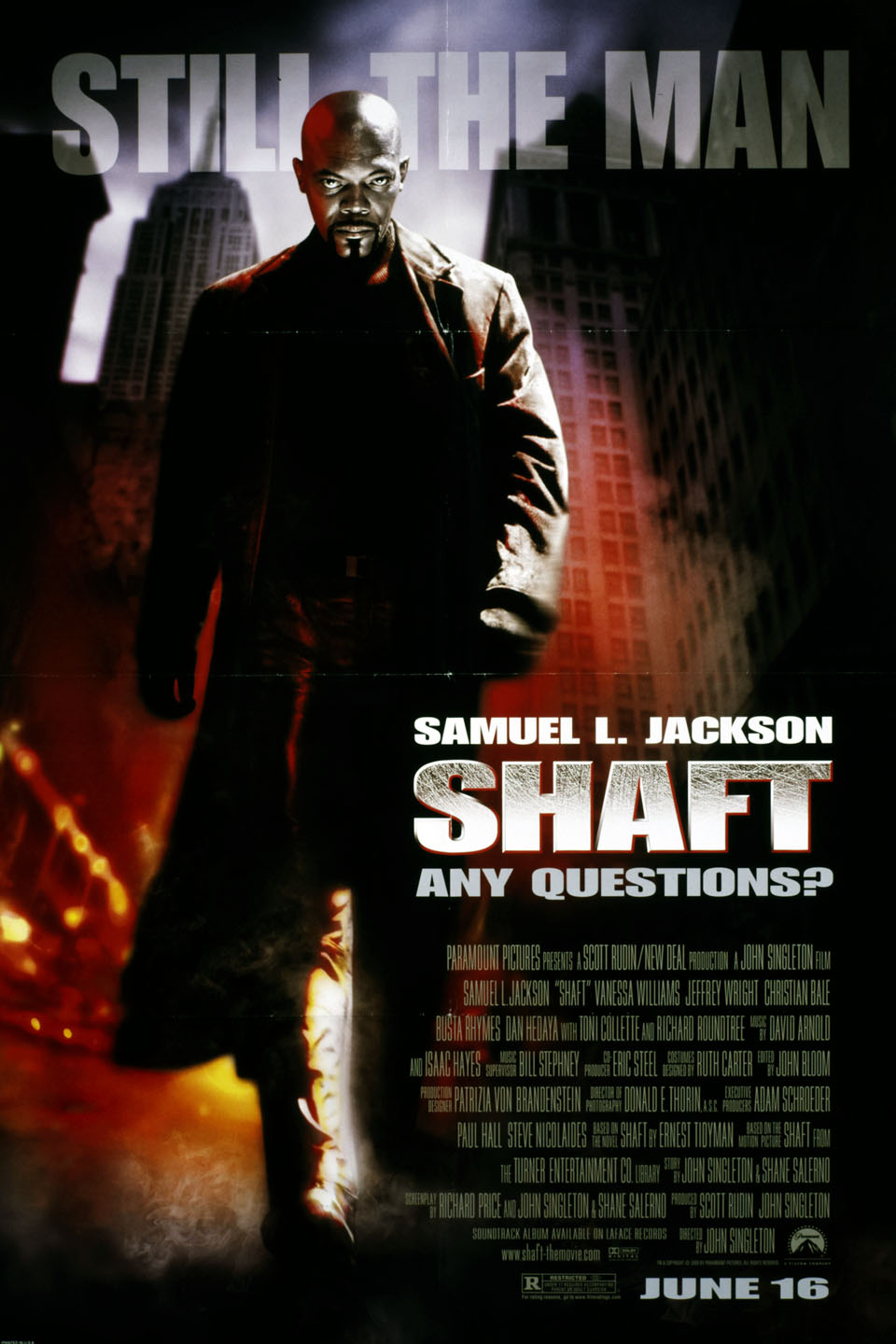
Occulted
My second trip up to The Constellations was alone and my first day of bouldering up there. I climbed on the boulders Scot and I had explored. As I left, I unintentionally took a different trail out than how we had approached and left before. Hidden behind a clump of trees and in the distance was the featured face of a boulder I hadn’t seen before. It looked huge. Maybe 8 meters tall! Maybe too big to boulder on up there with limited crash pads. I too tired to wobble up the talus to the boulder so I took a crappy picture from the distance and spent the following days down at sea level fantasizing about the monster face.
On the third trip, the first thing Sasha and I did was walk up to check out the big face. With every approach step, the face mysteriously shrunk. It wasn’t too big. It was almost the perfect size. We found so much to climb that day around our warm-up area that we never made it back to this hidden face.
My priority for the fourth trip was to climb this face. It is the first problem up at The Constellations that has the genuinely overhanging, gymnastic quality many of us desire.
In astronomy, an occultation is an event when one heavenly body passes between Earth and another more distant heavenly body blocking the view of the distant object.
Pentagram Arete
Pentagram Arete at The Constellations is a striking arete and kind of a scary highball above a two-tier talus landing.
A pentagram is the five-pointed shape most of us make when we draw a star. The pentagram has symbolized many things to different cultures. When it has only one point upwards, it symbolizes the triumph of spirit over matter or mind over limbs. This arete wasn’t a physically difficult problem but with an insecure move at the lip it did take a few tries for my mind to push my body over the top.
Sickle
The Sickle is the most obvious asterism in the spring evening sky. It is the head and mane of the constellation Leo and shaped like a backwards question mark.
This problem is one of the most obvious lines at The Constellations and is also shaped like a backwards question mark.
It is an easy problem but first ascents of easy problems can still be sketchy over bad jumbled rocky talus landings like this one’s. This face of rock is particularly solid. I just walked up to it and climbed it without cleaning a thing.
You can see how deep the snow is when I first pop up.
How Hummingbird Created the Stars
As I set up to try this line, a hummingbird startled me by zooming towards me. It stopped to hover just in front of my face and stared at me. Maybe it was my red shirt.
In North America, there is a legend about how the world was always in daytime. The animals angered The Great Spirt, so he covered the world with a blanket to punish them. The other animals tried but failed to solve the problem. Hummingbird could fly up to the blanket and poked holes in it with his beak to let the light through. He drew pictures in the blanket of his animal friends. The Great Spirt was so impressed by this effort, he removed the blanket for half the day and covered it again with the unmended blanket for the other half. That is how hummingbird created the stars.